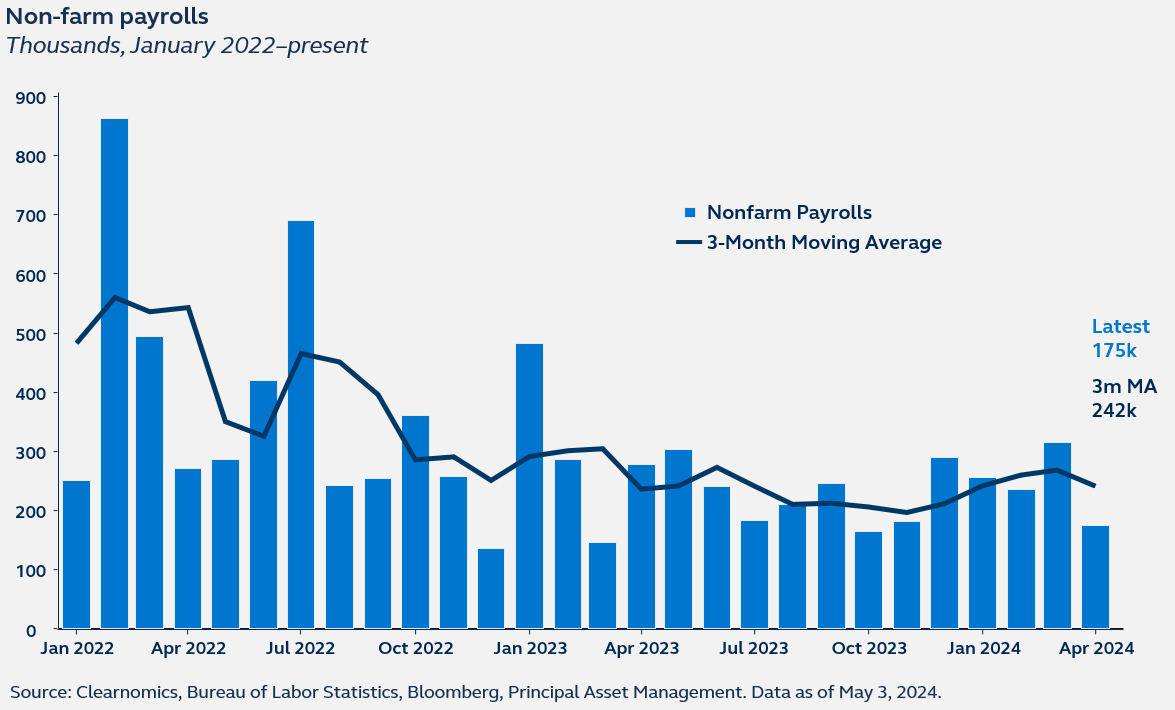Finally some relief - April Jobs Report

Report details
- Total non-farm payrolls increased by 175,000 in April, the smallest gain since last October, and down from 315,000 last month. Today’s report also marks the first time this year that payrolls have surprised to the downside. Note though that, as pre-COVID a 150,000 number would have been considered consistent with a robust U.S. economy, the slowdown in payroll gains to 175,000 should not be ringing any recession alarm bells.
- The unemployment rate rose from 3.8% to 3.9%, despite the participation rate remaining unchanged in April.
- Job growth slowed significantly in leisure and hospitality, dropping from an average monthly gain of 40,000 in the past three months to just 5,000 in April. Health and private education accounted for over half the monthly gain in payrolls, suggesting that cyclical sectors felt the main brunt of slower hiring.
- Monthly average hourly earnings growth dipped from 0.3% in March to 0.2% in April, below expectations. This brought the annual rate down to 3.9%, the lowest reading since June 2021.
Policy outlook
A number of analysts are now noting that a July rate cut from the Fed may be back on the table. Yet, as always, it is important not to over-emphasize one month’s data. Today’s employment data paints a picture of a loosening labor market, rather than the sharply weaker labor market that is likely necessary to prompt Fed officials to cut rates as soon as July.
Our
own forecast is for the first rate cut in the U.S. to come in September.
However, there is significant uncertainty around the timing of that first Fed
loosening. Persuasive evidence of slowing inflation, as well as a cooling labor
market, will be required to convince the Fed to cut just ahead of the
Presidential election. The next big data point is the CPI print, out on May 15.

